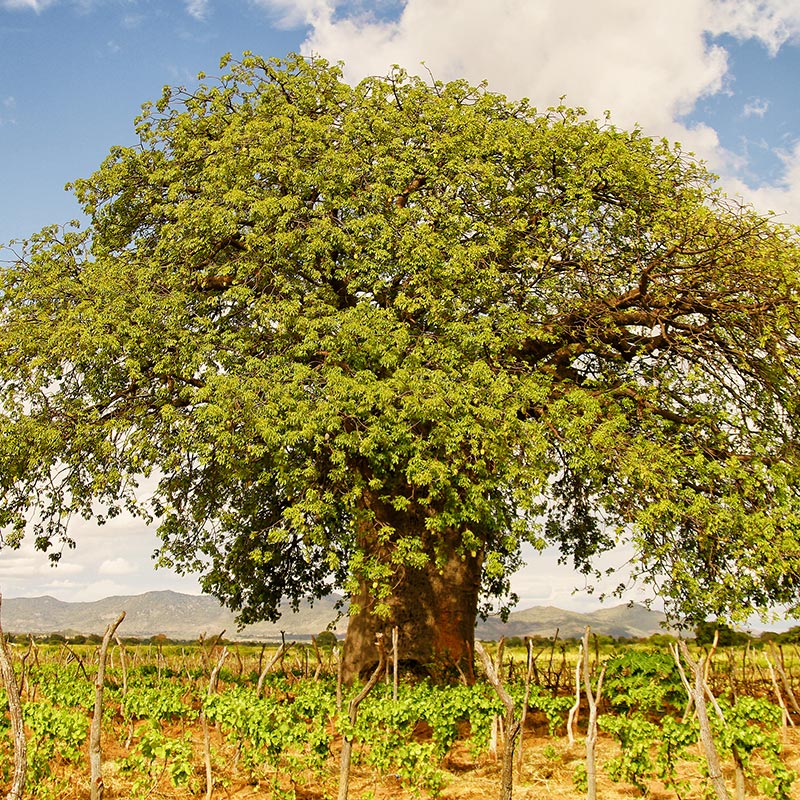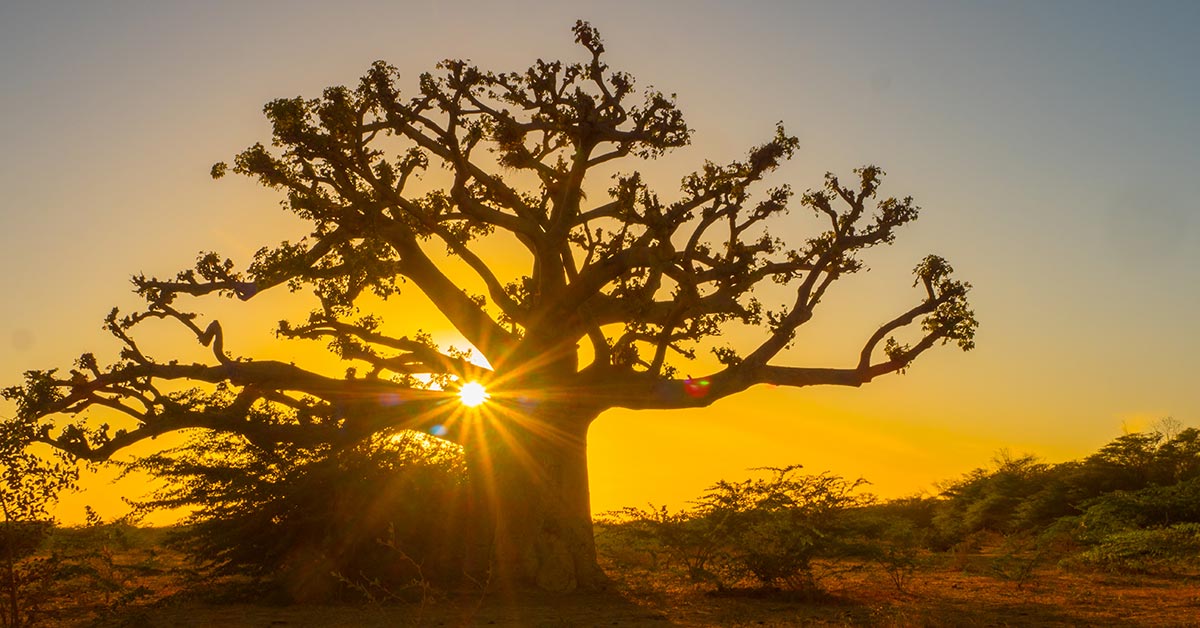
Organically Africa is dedicated to baobab sustainability. We work with harvesters throughout southern Africa to ensure the sustainability of the baobab tree.
Working on a density of three baobab trees per hectare, Non-profit organization PhytoTrade Africa (phytotrade.com) estimates the potential sustainable yield for the region to be 108,000 tons. This means that southern Africa alone has the resources to more than cover even the most optimistic global 10-year projections for Baobab multiple times over. In addition we are committed to the protection of the Baobab tree populations through ensuring that the harvesting of our Baobab leaves the trees undamaged. For many years southern African harvesters have set the standard for best practice in Baobab Fruit harvest techniques and fruit powder production to ensure Baobab sustainability.

Baobab Sustainability, Sustainable Harvesting to Protect the Baobab Tree
The production of Baobab Fruit Powder uses only the fruit; the trees themselves are undamaged. Our local harvesters have for many years set the standard for best practice in Baobab harvest and fruit powder production in Africa. They manage Baobab resources tightly, mapping and recording producing trees, documenting their ages and other relevant factors. This enables them to provide accurate forecasts of production levels from year to year and to ensure harvests are conducted sustainably. All of them have implemented strategies to systematically increase Baobab sustainability.
They also ensure that fruit harvest does not adversely impact regeneration of the species. They work in partnership with local communities to establish, nurture and protect new Baobab woodlands. In doing so, we strive to preserve the genetic width of the species (i.e. propagating from a wide variety of specimens not just the most productive) to ensure that the species retains the ability to adapt to environmental changes.
And the drive for conservation is happening at all levels of the value chain. Organically Africa and its suppliers know through experience that when a commercial value is attached to indigenous plant species and appropriate education is provided, rural communities in Africa are incentivized to protect these species for the long term.

The Baobab Tree
The African Baobab is a key stone tree species of African sub-Saharan regions. Known as the “tree of life” it holds a special status and role in the traditions and livelihoods of communities across Africa. Adansonia digitata is the most common species of African Baobab and is found in 31 African countries. They are recognizable by their distinctive swollen stems. Occurring naturally in the dry areas of Madagascar, Africa and Australia, they store massive amounts of water in their stems to cope with seasonal droughts.
The tree’s fruits are large pods known as ‘monkey bread’ or ‘cream of tartar fruit’ and they produce a dry fruit pulp that is highly nutritious [see Baobab Nutrition]. We now know that Baobab Fruit was on sale in the market in Cairo as early as the 16th century, apparently brought by slave caravans out of the Sudan.
All parts of the tree can be used. The dry fruit pulp has many uses; the most popular in most Africa regions is as a sherbert-like drink that is rich in vitamin C. The seeds can be pressed into oil that has wonderful nutrient and topical properties. The hard outer shell is waterproof and can be made into a variety of domestic articles such as calabashes and castanets. Both the seeds and the leaves can be eaten. The bark can be harvested without killing the tree, and pounded to make rope.
Two things really make the Baobab stand out. Their amazing size and age.
Some Baobab trees grow so large that they become national landmarks:
- Green’s Baobab, south of Gweta, Botswana, was inscribed by the 19th-century hunters and traders Frederick Thomas Green and Hendrik Matthys van Zyl besides other ruthless characters.
- Chapman’s Baobab in Botswana had a circumference of 75 feet before its constituent trunks collapsed outward in 2016. It is not confirmed dead, however. The tree was historically used as a navigation beacon and as a post office by passing explorers, traders and travellers, many of whom left inscriptions on its trunk.
- The Ombalantu baobab in Namibia has a hollow trunk that can accommodate some 35 people. At times it has served as a chapel, post office, house, and a hiding site. Some large specimens have been transplanted to new sites, as was the one at Cresta Mowana lodge in Kasane.
- There are 4 separate trees in northern South Africa whose girths are known to exceed 100 feet.
The age of Baobabs was always a debating point over the years. In the absence of annual rings to count the scientific evidence was always tenuous. However in late 2004, Grootboom, a well-known and extremely large African baobab located in northeastern Namibia collapsed unexpectedly. Ten wood samples collected from different areas of the trunk were processed and investigated by accelerator mass spectrometry radiocarbon dating. The radiocarbon dates of three samples were greater than 1000 years BP (radiocarbon years before present, i.e., before AD 1950). The corresponding calibrated calendar age of the oldest sample was 1275 +/- 50 years, making Grootboom the oldest known angiosperm tree with reliable dating results.
During the early summer (October to December in southern hemisphere) the tree bears very large, heavy, white flowers. These open during the late afternoon to stay open for one night. The pendulous, showy flowers have a very large number of stamens. They have a sweet scent but later emit a carrion smell, especially when they turn brown and fall after 24 hours. Researchers have shown that they appear to be primarily pollinated at night by fruit bats.
Let’s Talk About Baobab Sustainability
If you are looking for a sustainable ingredient for your next food product, we should talk.
